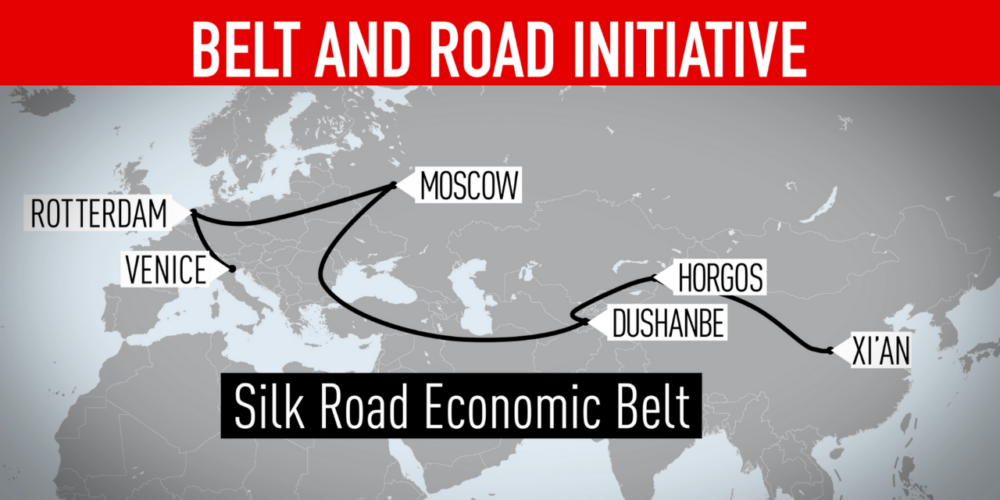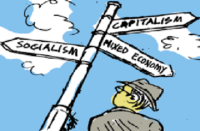By the end of China’s civil war in 1949, the country was severely damaged: its agriculture decimated, most transport routes destroyed, the industrial infrastructure looted by the Japanese. Despite chaos, poverty, and hunger, Mao Zedong successfully built a centrally planned economy and a self-reliant military.
The first Five-Year Plan in 1953 replaced individual farms with communal agriculture, developed heavy industry, and opened thousands of new factories.
By 1964 China was a nuclear power, and by 1970 it launched its first satellites. China asserted itself as a regional military power through successful defences of North Korea and North Vietnam against the Western capitalist bloc.
The song “The East is Red” became the revolutionary anthem of China, reflecting China’s growing self-awareness as the backstop of socialism in Asia.
When Mao’s main rival, Deng Xiaoping, came to power in 1978 he opened up the Chinese economy to foreign investment. Deng saw himself as a pragmatist, famously quoting the Sichuanese proverb: “it doesn’t matter if a cat is black or yellow, as long as it catches mice”, meaning economic success was more important than ideological purity.
The victory of the counter-revolution in the USSR in 1991 was celebrated by Western academics like Francis Fukuyama, who delusionally declared the “end of history”. Western academia saw it as proof that Western liberal democracy was the final and best form for organising human society. Henceforth, all countries would be forced to become replicas of the USA, either by soft means (i.e., NATO membership, World Bank and IMF loans) or hard (i.e., military invasions such as in Yugoslavia, Iraq, Afghanistan, Libya, and Syria). The bipolar world was replaced by a unipolar order dominated by Western capitalism.
China initially played along, joining the World Trade Organization in 2001. This was a continuation of the course set by Deng: “Socialism with Chinese Characteristics” for a new era. Accordingly, most manufacturing industries were privately owned and managed, while strategic industries like energy, banking and defence were fully owned and controlled by the state.
When Vladamir Putin became President of the Russian Federation in 1999, he set about restoring its position as a major power. He knew Russia could not afford to challenge US economic hegemony on its own, so in 2009 he joined the initiative of BRIC, an economic cooperation pact between the “emerging economies” of Brazil, Russia, India and China (South Africa joined a year later).
In 2013 the new Chinese Premier Xi Jinping unveiled his “Chinese Dream” of a strong, rich, and modern socialist country. Xi’s major foreign policy, the Belt and Road Initiative (BRI), has strengthened economic ties between China and dozens of countries in Asia-Pacific, Africa, Europe, and South America, created six new global economic corridors, and effectively ended Western hegemony in international development.
China is now the world’s manufacturing powerhouse. Beyond consumer goods, it leads in robotics, aerospace, semiconductors, AI, ICT, biopharmaceuticals, electric vehicles, and every other domain of cutting-edge manufacturing. Most remarkably of all, it has assumed this pivotal economic and geopolitical role without directly challenging the United States.
Trump’s tariffs are a desperate ploy to halt China’s inevitable rise and stem the equally inevitable decline of the United States. They mark the first time the United States has abandoned liberal economic policies since World War II. For three decades, the Zionist ruling class of the United States has bet everything on war: military and economic. Finally, they have met their match. The United States cannot win an economic war against China any more than they can win militarily.
China has out manoeuvred them. JD Vance’s recent derogatory remarks about Chinese peasants are more revealing of an ossified Western mentality than of Chinese realities. China has grown to the stature of a giant while the United States squandered its social and economic capital on war.
The USA has belatedly awoken to the fact that it has massively lost ground. Though declining, it is still very powerful and will not cede its hegemony lightly. That is why we are witnessing multiple crises and tectonic geopolitical shifts that could potentially lead to World War III.
But these risks should not distract us from the bigger picture: the East has arisen!






